- Home
- Edgar Allan Poe
The Narrative of Arthur Gordon Pym of Nantucket Page 27
The Narrative of Arthur Gordon Pym of Nantucket Read online
Page 27
—From Richard Henry Dana’s Two Years Before the Mast, published in 1840. Having left Harvard for a two-year stint as a common sailor, Dana based his memoir on diaries he’d kept while voyaging around Cape Horn on the brig Pilgrim.
5. THE HALF-BREED
Dirk Peters
This man was the son of an Indian squaw of the tribe of Upsarokas, who live among the fastnesses of the Black Hills, near the source of the Missouri. His father was a fur-trader, I believe, or at least connected in some manner with the Indian trading-posts on Lewis river. Peter himself was one of the most ferocious-looking men I ever beheld. He was short in stature, not more than four feet eight inches high, but his limbs were of Herculean mould. His hands, especially, were so enormously thick and broad as hardly to retain a human shape. His arms, as well as legs, were bowed in the most singular manner, and appeared to possess no flexibility whatever. His head was equally deformed, being of immense size, with an indentation on the crown (like that on the head of most negroes), and entirely bald. To conceal this latter deficiency, which did not proceed from old age, he usually wore a wig formed of any hair-like material which presented itself—occasionally the skin of a Spanish dog or American grizzly bear. At the time spoken of, he had on a portion of one of these bearskins; and it added no little to the natural ferocity of his countenance, which betook of the Upsaroka character. The mouth extended nearly from ear to ear, the lips were thin, and seemed, like some other portions of his frame, to be devoid of natural pliancy, so that the ruling expression never varied under the influence of any emotion whatever. This ruling expression may be conceived when it is considered that the teeth were exceedingly long and protruding, and never even partially covered, in any instance, by the lips. To pass this man with a casual glance, one might imagine him to be convulsed with laughter, but a second look would induce a shuddering acknowledgment, that if such an expression were indicative of merriment, the merriment must be that of a demon. Of this singular being many anecdotes were prevalent among the sea-faring men of Nantucket. These anecdotes went to prove his prodigious strength when under excitement, and some of them had given rise to a doubt of his sanity. But on board the Grampus, it seems, he was regarded, at the time of the mutiny, with feelings more of derision than of anything else. I have been thus particular in speaking of Dirk Peters, because, ferocious as he appeared, he proved the main instrument in preserving the life of Augustus, and because I shall have frequent occasion to mention him hereafter in the course of my narrative.
—From Chapter IV of Pym.
Contemporary Perceptions of
Mixed-Race Individuals
From Fort Garry I invited my friend to accompany me on a visit to the upper part of the settlement, as he was anxious to know what kind of life the Canadians and half-breeds lead in this part of the world. We had not proceeded far before we met a stout, well-made, good-looking man, dressed in a common blue capote, red belt, and corduroy trousers; he spoke French, and was a Canadian. That, said I, pointing to his dress, is the universal costume of both Canadians and half-breeds, the belt being the simple badge of distinction; the former wearing it generally over, and the latter as generally under the capote. The stature of the halfbreeds is of the middle size, and generally slender, countenances rather pleasing than otherwise. In manners mild, unassuming, not to say effeminate, and somewhat bashful. On the whole, however, they are a sedate and grave people, rather humble than haughty in their demeanour, and are seldom seen to laugh among strangers. The women are invariably fairer than the men, although at all seasons almost equally exposed. They are not, however, high coloured, but rather pale and sallow; resembling in their complexion more the natives of Spain, or the south of France, than the swarthy Indian here. I have, indeed, seen individuals as fair, and the tint of their skin as delicate, as any European lady.
The half-breed women are also slender, still more so than the men, but exceedingly well-featured and comely—many even handsome; and those who have the means are tidy about their person and dress. They are fond of show, and invariably attire themselves in gaudy prints, and shawls, chiefly of the tartan kind—all, as a matter of course, of foreign manufacture; but, like Indian women, they are very tenacious of the habits and customs of their native country. The blanket as an overall is considered indispensable; it is used on all occasions, not only here, but throughout the continent, both at home and abroad; if a stick is wanted for the fire, or a pleasure party is to be joined away from home, the blanket is called for. This invariable habit gives them a stooping gait while walking, and the constant use of the same blanket, day and night, wet and dry, is supposed to give rise to consumptive complaints, which they are all more or less very subject to. At the age of thirty years, they generally look as old as a white woman of forty; perhaps from the circumstance that they marry young, and keep their children long at the breast.
We have noticed the extreme bashfulness peculiar to the half-breeds, or what might more properly be termed their false modesty or shyness, similar to what is observable among the Formosans. It is exhibited in almost every circumstance; for, although many of them understand and speak both French and English, yet they are averse to speak any other language than their mother tongue. And if the traveller chance to meet one of them on the road, she will instantly shroud her head in her blanket, and try to pass without speaking. Speak to her, and she looks to the ground. Stop, and she turns to one side, and ten to one passes without answering you. For one of her own countrymen, however, a smile, a “bon jour,” and a shake of the hand is always ready.
Such is the roving propensity of these people that they are never in their proper element, unless gossiping from house to house. Like a bird in the bush, they are always on the move; and as often in their neighbours’ houses as in their own. It is not uncommon for a woman getting up in the morning, to throw her blanket about her and set off on a gossiping tour among her neighbours, and leave her children foodless and clothesless among the ashes, to shift for themselves; yet, like most Indian women, they are generally tender mothers. We hope the ladies alluded to will take a useful lesson from these remarks. And likewise reform their shopping propensity and love of fineries, which do not bespeak industrious habits, or a great desire to manufacture their own clothing. These are blemishes not easily removed …
They are not, properly speaking, farmers, hunters, or fishermen; but rather confound the three occupations together, and follow them in turn, as whim or circumstances may dictate. They farm to-day, hunt to-morrow, and fish the next, without anything like system; always at a nonplus, but never disconcerted. They are great in adventuring, but small in performing; and exceedingly plausible in their dealings. Still, they are oftener more useful to themselves than to others, and get through the world the best way they can, without much forethought or reflection.
—From Alexander Ross’s The Red River Settlement, published in 1856. The narrative describes Ross’s time at the Red River Colony in present-day Manitoba, where he himself had “half-blood” children with his wife, a Native American woman.
For our own parts, the Commissioner and myself were desirous, before setting out, to procure another attendant well-versed in woodcraft, who might serve as a hunter … Such a one presented himself, or rather was recommended to us, in Pierre Beatte, a half-breed of French and Osage parentage. We were assured that he was acquainted with all parts of the country, having traversed it in all directions, both in hunting and war parties; that he would be of use both as guide and interpreter, and that he was a first-rate hunter.
I confess I did not like his looks when he was first pointed out to me. He was lounging about in an old hunting-frock and metusses, or leggings, of deer-skin soiled and greased, and almost japanned by constant use. He was apparently about thirty-six years of age, square and strongly built. His features were not bad, being shaped not unlike those of Napoleon, but sharpened up, with high Indian cheek-bones. Perhaps the dusky greenish hue of his complexion added to his resemblance to an ol
d bronze bust I had seen of the Emperor. He had, however, a sallow, saturnine expression, set off by a slouched woollen hat, and elf-locks that hung about his ears.
Such was the appearance of the man, and his manners were equally unprepossessing. He was cold and laconic; made no promises nor professions; stated the terms he required for the services of himself and his horse, which we thought rather high, but he showed no disposition to abate them, nor any anxiety to secure our employ. He had, altogether, more of the red than the white man in his composition; and, as I had been taught to look upon all half-breeds with disgust, as an uncertain and faithless race, I would gladly have dispensed with the services of Pierre Beatte.… We had not been long encamped, when our recently engaged attendant, Beatte, the Osage half-breed, made his appearance. He came mounted on one horse and leading another, which seemed to be well packed with supplies for the expedition. Beatte was evidently an ‘old soldier,’ as to the art of taking care of himself and looking out for emergencies. Finding that he was in government employ, being engaged by the Commissioner, he had drawn rations of flour and bacon, and put them up so as to be weather-proof. In addition to the horse for the road, and for ordinary service, which was a rough, hardy animal, he had another for hunting. This was of a mixed breed like himself, being a cross of the domestic stock with the wild horse of the prairies; and a noble steed it was, of generous spirit, fine action, and admirable bottom. He had taken care to have his horses well shod at the Agency. He came prepared at all points for war or hunting: his rifle on his shoulder, his powder-horn and bullet-pouch at his side, his hunting-knife stuck in his belt, and coils of cordage at his saddle bow, which we were told were lariats, or noosed cords, used in catching the wild horse.
Thus equipped and provided, an Indian hunter on a prairie is like a cruiser on the ocean, perfectly independent of the world, and competent to self-protection and self-maintenance. He can cast himself loose from every one, shape his own course, and take care of his own fortunes. I thought Beatte seemed to feel his independence, and to consider himself superior to us all, now that we were launching into the wilderness. He maintained a half proud, half sullen look, and great taciturnity, and his first care was to unpack his horses and put them in safe quarters for the night. His whole demeanor was in perfect contrast to our vaporing, chattering, bustling little Frenchman. The latter, too, seemed jealous of this new-comer. He whispered to us that these half-breeds were a touchy, capricious people, little to be depended upon. That Beatte had evidently come prepared to take care of himself, and that, at any moment in the course of our tour, he would be liable to take some sudden disgust or affront, and abandon us at a moment’s warning: having the means of shifting for himself, and being perfectly at home on the prairies.
—From Washington Irving’s Tour on the Prairies, a nonfiction account of a trip to eastern Oklahoma, then known as “the Indian Territory,” in 1832. The book was published in 1835.
READING II
Selections from A Strange Discovery
by Charles Romyn Dake
In Dake’s book, a sequel to Pym, the narrator, an Englishman, travels to Southern Illinois on business. While spending a few days in the town of Bellevue, he encounters a young homeopathist, Dr. Bainbridge, and the two discover that they have literary tastes in common, including the work of Edgar Allan Poe. A conversation ensues.
“Let me alter my question—or, I should say, ask a different one,” I said, when he had again seated himself: “Which of Poe’s stories most interested you? From which did you receive the most satisfaction?”
“I have been more occupied and interested by The Narrative of A. Gordon Pym than by any two or three of his other stories.”
I expressed surprise at this avowal; and my comments on what appeared to me to show a peculiar taste implied a desire for explanation. He continued:
“Although The Narrative of A. Gordon Pym has served as a suggestion, or even a pattern, for some of our best recent stories of adventure, and although it has many points of excellence in itself, it is not the story alone, but the opportunity which the story affords of an analysis of Poe’s mind, that creates the greater interest for me. I have always been puzzled to find a reasonably adequate cause for the incomplete state of that narrative. The supposition that Poe had not at his disposal, at the moment he required it, the necessary time for its completion is an hypothesis which I only mention to dispose of. At its close he wrote and added to the narrative a ‘Note’ of early a thousand words; and in the time required for the penning of that addition, he could have brought the story to—perhaps an abrupt, but still, an artistic close. No. Then did Poe not complete The Narrative of A. Gordon Pym because his imagination failed him—failed to supply material of such a quality as his refined and faultless taste demanded? If so, then why did he begin it? Why write more than sixty thousand words in his usual careful and precise style, on a subject to him little known, in to him a new field of literary effort? He could in the time required to write The Narrative of A. Gordon Pym have written from five to ten short stories along familiar lines. No: none of these hypotheses explains the unfinished state of that narrative. My explanation is that the story has a foundation in fact, and that Poe himself never learned more than a foundation for the portion which he wrote. Its leading character next to Pym is one Dirk Peters, a sailor, mutineer, etc. It is my theory that Pym and Peters existed in fact, but that Poe never met either of them, though he did meet sailors who had known Dirk Peters, and that he heard from them the first part of the story, in the form in which it grew to be repeated by seafaring men along the New England coast in the ’30s and ’40s. Having heard what he supposed to be sufficient, with the aid of his own imagination, to make an interesting story for publication, Poe began and continued to write. Then, as he progressed, he found that his imagination was embarrassed—frustrated by the known facts already employed—whilst it was not assisted by new facts which he was positive existed, but which he could not procure. As he attempted to close the narrative, the cold, written page was a very different thing from what he had conceived it would be as he sat in the tap-room of some New England old ‘Sailor’s Home,’ with a couple of glasses of Burton ale on the table, listening through the drowsy afternoon to the fact and fiction of some old ‘tar,’ as the two looked across the white-sanded floor at the old moss-grown dock without, and listened to the salt wavelets splashing against its rotting timbers, and watched the far-distant sails on the outer sea. It is not very difficult to picture to one’s self Poe searching among these sailors’ lodging-houses for Dirk Peters; nor is it unreasonable to assume that he did so search for him. If Dirk Peters was twenty-seven years old in 1827, when the mutiny occurred, he was only forty-nine at the time of Poe’s death—in fact, would be only seventy-seven if now alive. Poe says in his ‘Note,’ that ‘Peters, from whom some information might be expected, is still alive, and a resident of Illinois, but cannot be met with at present. He may hereafter be found, and will, no doubt, afford material for a conclusion of Mr. Pym’s account.’ I have no doubt that Poe eventually learned exactly where Peters resided; but no matter how much Poe may have desired to meet with Peters, he could not have done so. In the ’40s it was a long, tedious, expensive journey from New York to Illinois. Still, Poe hoped some day to meet Peters, and did not care to say to the public exactly where he could be met with. Then came Poe’s unutterably sad death, leaving the narrative incomplete.”
As Bainbridge neared the close of his remarks, we heard a heavy and rapid step approach along the hall. It stopped before my door; and just as Bainbridge ceased to speak, a loud rap, evidently made with the head of a heavy cane, sounded on the panel. The door flew open, and Doctor Castleton rushed into the middle of the room—or, rather, bounded across the room. Bainbridge and I instantly arose, and I stepped forward to take Doctor Castleton’s hand in mine, and to care for his hat and cane; but he waved me off. “No, no: no time—not a minute to spare—three patients waiting”—here he glanced at Bainbridg
e, as if to observe the effect of his speech on a beginner, who was fortunate if he yet possessed a single patient—“like to keep my word—fine evening.” He seated himself on the edge of a chair, and projected his glance around the room. No better subject immediately presenting itself to mind, I remarked that we had just been talking of Edgar Allan Poe, and his unfinished story, The Narrative of A. Gordon Pym; and I spoke of Dirk Peters.

 The Works of Edgar Allan Poe — Volume 2
The Works of Edgar Allan Poe — Volume 2 The Works of Edgar Allan Poe — Volume 1
The Works of Edgar Allan Poe — Volume 1 The Works of Edgar Allan Poe — Volume 3
The Works of Edgar Allan Poe — Volume 3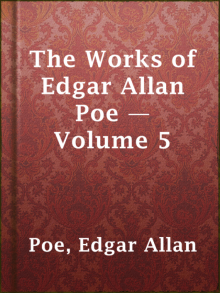 The Works of Edgar Allan Poe — Volume 5
The Works of Edgar Allan Poe — Volume 5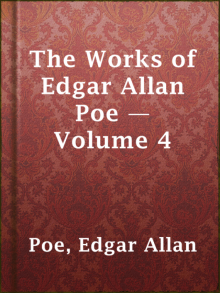 The Works of Edgar Allan Poe — Volume 4
The Works of Edgar Allan Poe — Volume 4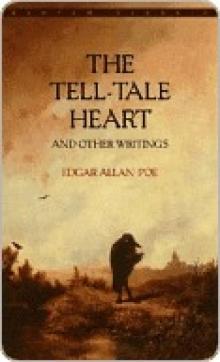 The Tell-Tale Heart
The Tell-Tale Heart The Raven (Penguin)
The Raven (Penguin)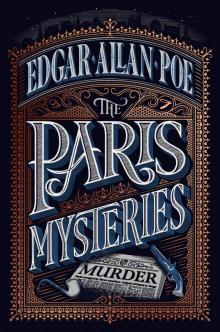 The Paris Mysteries
The Paris Mysteries Tales of Terror from Edgar Allan Poe
Tales of Terror from Edgar Allan Poe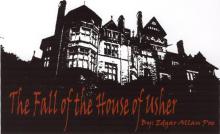 The Fall of the House of Usher
The Fall of the House of Usher The Golden Book of World's Greatest Mysteries
The Golden Book of World's Greatest Mysteries The Narrative of Arthur Gordon Pym of Nantucket
The Narrative of Arthur Gordon Pym of Nantucket Ligeia
Ligeia The Landscape Garden
The Landscape Garden Complete Tales & Poems
Complete Tales & Poems Great Tales and Poems of Edgar Allan Poe
Great Tales and Poems of Edgar Allan Poe The Colloquy of Monos and Una
The Colloquy of Monos and Una The Oblong Box
The Oblong Box Thou Art the Man
Thou Art the Man A DESCENT INTO THE MAELSTROM
A DESCENT INTO THE MAELSTROM THE MURDERS IN THE RUE MORGUE
THE MURDERS IN THE RUE MORGUE The Business Man
The Business Man The Mystery of Marie Rogêt
The Mystery of Marie Rogêt Metzengerstein
Metzengerstein The Man That Was Used Up
The Man That Was Used Up William Wilson
William Wilson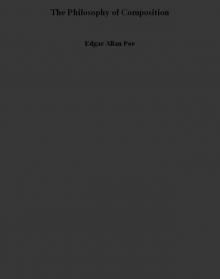 The Philosophy of Composition
The Philosophy of Composition The Portable Edgar Allan Poe
The Portable Edgar Allan Poe Bon-Bon
Bon-Bon A Predicament
A Predicament The Premature Burial
The Premature Burial The Angel of the Odd
The Angel of the Odd The Man of the Crowd
The Man of the Crowd Never Bet the Devil Your Head
Never Bet the Devil Your Head The Tell-Tale Heart and Other Writings
The Tell-Tale Heart and Other Writings The System of Doctor Tarr and Professor Fether
The System of Doctor Tarr and Professor Fether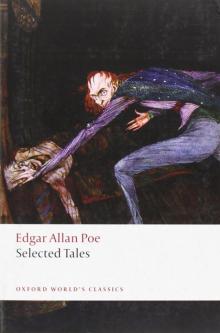 Selected Tales (Oxford World's Classics)
Selected Tales (Oxford World's Classics)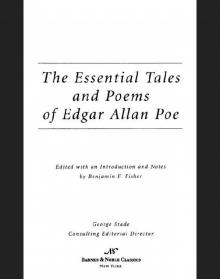 Essential Tales and Poems of Edgar Allan Poe (Barnes & Noble Classics Series)
Essential Tales and Poems of Edgar Allan Poe (Barnes & Noble Classics Series) MS. Found in a Bottle
MS. Found in a Bottle Some Words with a Mummy
Some Words with a Mummy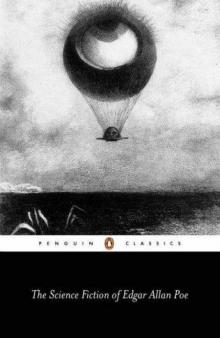 The Science Fiction of Edgar Allan Poe (Penguin Classics)
The Science Fiction of Edgar Allan Poe (Penguin Classics) King Pest
King Pest CRITICISM
CRITICISM How to Write a Blackwood Article
How to Write a Blackwood Article Mystification
Mystification Diddling Considered as One of the Exact Sciences
Diddling Considered as One of the Exact Sciences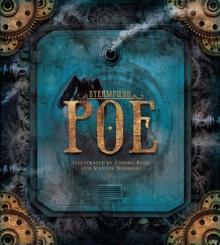 Steampunk Poe
Steampunk Poe The Literary Life of Thingum Bob, Esq.
The Literary Life of Thingum Bob, Esq. Classic Crime Collection
Classic Crime Collection Complete Stories and Poems of Edgar Allen Poe
Complete Stories and Poems of Edgar Allen Poe Berenice
Berenice The Black Cat
The Black Cat The Slender Poe Anthology
The Slender Poe Anthology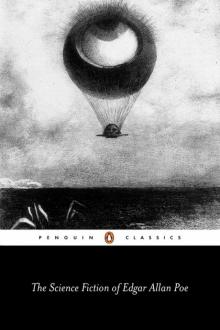 The Science Fiction of Edgar Allan Poe
The Science Fiction of Edgar Allan Poe The Assignation
The Assignation The Thousand-and-Second Tale of Scheherazade
The Thousand-and-Second Tale of Scheherazade The Raven and Other Short Stories
The Raven and Other Short Stories The Spectacles
The Spectacles Hop-Frog
Hop-Frog The Purloined Letter
The Purloined Letter Mellonta Tauta
Mellonta Tauta The Balloon-Hoax
The Balloon-Hoax Landor's Cottage
Landor's Cottage Mesmeric Revelation
Mesmeric Revelation The Pit and the Pendulum
The Pit and the Pendulum